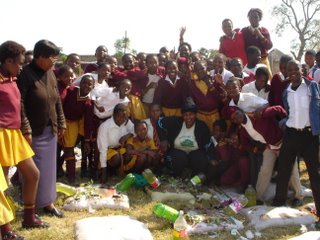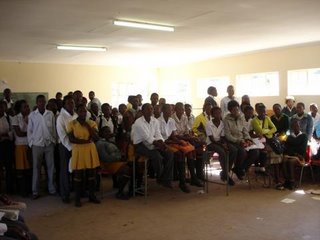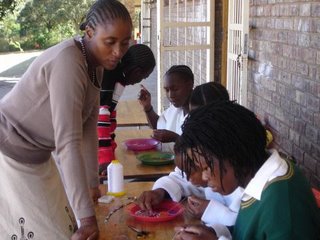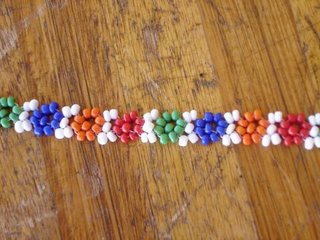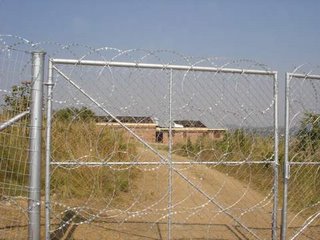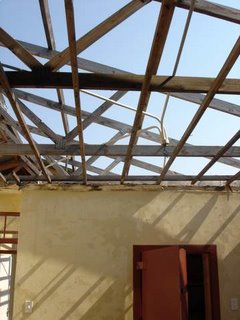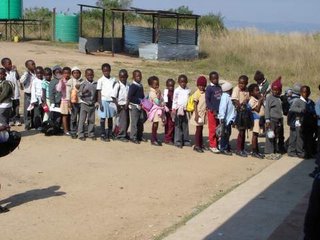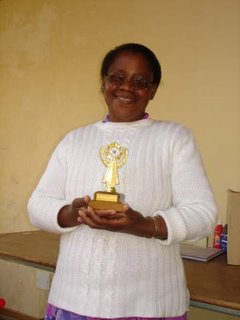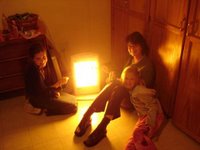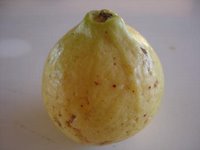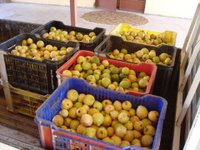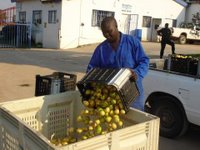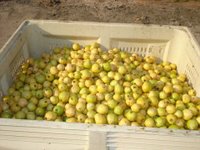Thanks for all of your feedback on the last blog, we’re still looking into ways to help the government schools. I don’t want to give a message of doom and gloom out in the township schools (FYI – the townships are the only areas where black people were permitted to live prior to 1994), there are lots of good things going on there.
During the orphan camps that were held at C4L last December, the kids were taught some life skills to help improve their health situation as lots of these children or their family members are HIV/AIDS infected. They were taught how to grow vitamin-rich vegetables using resources that are accessible to them. By growing vegetables in a dirt-filled grain sack cut with small holes for the veggies and watered by using pop bottles up-ended in the soil to disperse the water slowly, they are able to grow healthy food in a very small space. Heather was very pleased when we visited a school and saw the same process being demonstrated in the schools, here they are:
Last Friday I did another township trip mostly because our vehicle was needed for transport. A number of our camp leaders have been volunteering their time to help kids in rural schools start some after school clubs. Kids who are bored tend to get into trouble (it’s the same all around the world) and by starting these clubs the children learn new skills and build a larger network of supportive friendships. The school knew we were coming and we arrived to the smiling faces of over 150 orphans.
They divided themselves into groups based on their interests: music, drama, beading, drumming, speech and debating. In each group, skills were taught and leaders were appointed to keep the groups going. I joined in with the beading group, these ladies are learning skills that they can hopefully use to generate an income by selling their beadwork. Even newcomers like me can learn, here’s my finished product. Maybe if I sit out on the roadside, I’ll be able to sell my wares!
